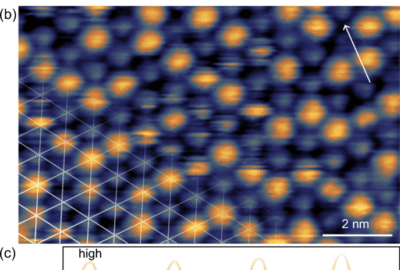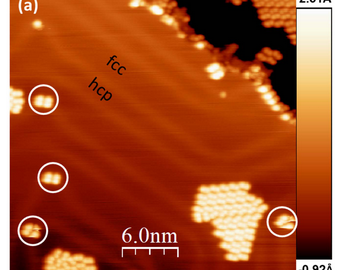publications, Réseau
Enhanced interfacial water dissociation on a hydrated iron porphyrin single-atom catalyst in graphene
Single Atom Catalysis (SAC) is an expanding field of heterogeneous catalysis in which single metallic atoms embedded in different materials catalyze a chemical reaction, but these new catalytic materials still lack fundamental understanding when used in electrochemical environments. Recent characterizations of non-noble metals like Fe deposited on N-doped graphitic materials have evidenced two types of Fe-N4 fourfold coordination, either of pyridine type or of porphyrin type. Here, we study these defects embedded in a graphene sheet and immersed in an explicit aqueous medium at the quantum level. While the Fe-pyridine SAC model is clear cut and widely studied, it is not the case for the Fe-porphyrin SAC that remains ill-defined, because of the necessary embedding of odd-membered rings in graphene. We first propose an atomistic model for the Fe-porphyrin SAC. Using spin-polarized ab initio molecular dynamics, we show that both Fe SACs spontaneously adsorb two interfacial water molecules from the solvent on opposite sides. Interestingly, we unveil a different catalytic reactivity of the two hydrated SAC motives: while the Fe-porphyrin defect eventually dissociates an adsorbed water molecule under a moderate external electric field, the Fe-pyridine defect does not convey water dissociation.
Laura Scalfi, Maximilian R. Becker, Roland R. Netz,Marie-Laure Bocquet, Communications Chemistry, 6, Article number: 236 (2023), link
Comments are closed






